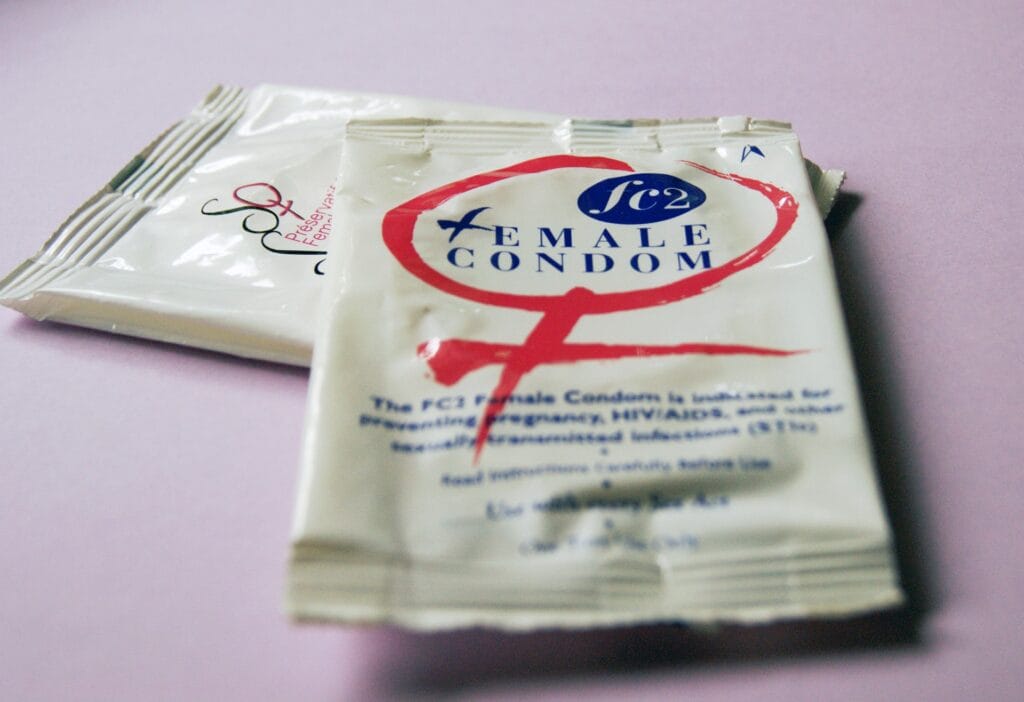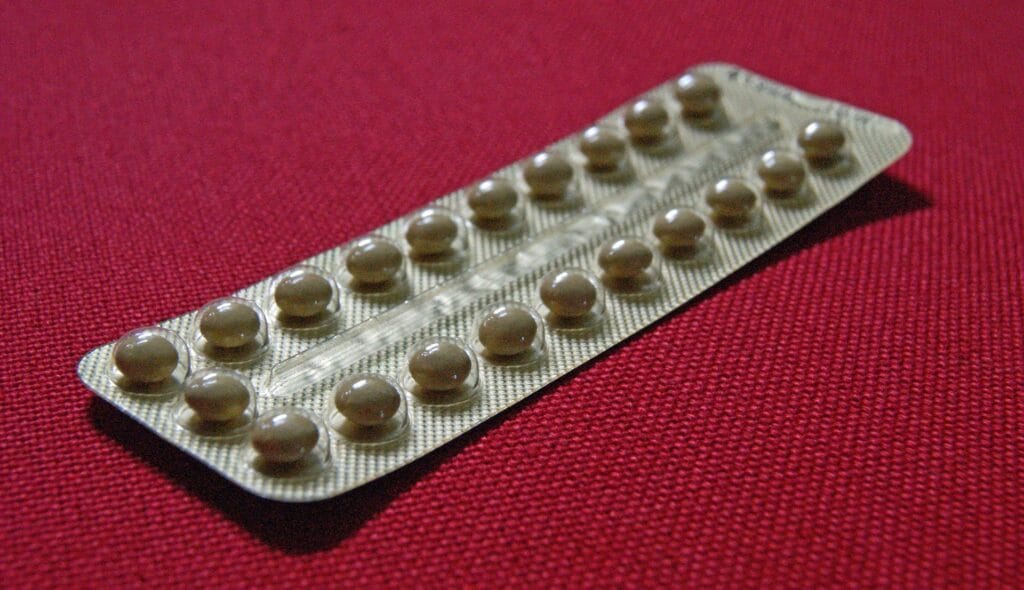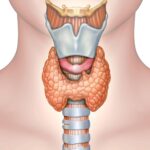- Home
- GYNECOLOGY/OBSTETRICS
- CONTRACEPTIVES

Contraception includes all the measures, temporary or permanent, that are designed to prevent pregnancy due to the coital act. Ideal contraceptive methods should be highly (100%) effective, acceptive, safe, reversible, cheap, have non-contraceptive benefits, simple to use, and require minimal motivation, maintenance, and supervision.
Contraceptive effectiveness: The failure rate of any contraceptive is calculated in terms of pregnancy rate per hundred women years (HWY) of use.
Methods of contraception
The various methods of contraception are outlined below;
Temporary methods
- Barrier methods
These methods prevent sperm deposition in the vagina or prevent sperm penetration through the cervical canal. This is achieved by mechanical devices or chemical means which produce sperm immobilization or by combining the two.
– Condom (male)
Condoms are made of polyurethane or latex. Mostly used.
The efficacy of condoms can be easily augmented by improving the quality of the products and by adding spermicidal agents during their use. Protection against sexually transmitted diseases is an additional advantage.

– Female condom
It is a pouch made of polyurethane that lines the vagina and external genitalia. It is 17 cm long with one flexible polyurethane ring at each end. The inner ring at the closed end is smaller than the outer ring. The inner ring is inserted at the apex of the vagina, and the outer ring remains outside. It gives the protection against STDs and pelvic inflammatory diseases.
Advantages
· Cheaper
· No side effects.
· Easy to carry, use, and disposable
· Protection against STDs, e.g., gonorrhea, chlamydia, HPV, and HIV
· Protection against pelvic inflammatory diseases
· Reduces incidence of infertility and ectopic pregnancy
· Protection against cervical cell abnormalities
· Proper where the coital act is infrequent and irregular
Disadvantages
· May accidentally break/slip off during coitus
· Inadequacy of sexual pleasure
· Allergic reaction (Latex)
· To discard after one coital act
· Failure rate — 15/HWY

– Diaphragm
An intravaginal device that is made of latex with a flexible metal or spring ring at the margin. Its diameter varies from 5 cm to 10 cm. It requires medical or paramedical personnel to measure the size of the device. The diaphragm should completely cover the cervix. As it cannot effectively prevent the ascent of the sperms alongside the device’s margin, the additional chemical spermicidal agent should be placed on superior surface of the device during insertion so that it remains in contact with the cervix. Introduced up to 3 hours prior to intercourse and kept for at least 6 hours after the last coital act.
Advantages
· Cheap
· It can be used repeatedly for longer time
· Reduces PID/STIs to some extent
· Protects against cervical precancer and cancer
Disadvantages
· Requires the help of a doctor or paramedical person to measure the size required
· The risk of vaginal irritation, ablation, and urinary tract infection are there.
· Not suitable for women with uterine prolapse
- Vaginal contraceptives
Spermicides are available as vaginal foams, creams, gels, , tablets, and suppositories. Contain surfactants e.g. nonoxynol–9, octoxynol, or benzalkonium chloride. These agents cause sperm immobility. The jelly is introduced high in the vagina with the help of the applicator soon before coitus. Foam tablets should be introduced high in the vagina at least 5 minutes before intercourse. On its own, it is not effective (18–29/HWY) as it just enhances the efficacy of a condom or diaphragm when used along with it. Occasional local allergic symptoms either in the vagina or vulva might be experienced.
- Fertility awareness methods
The fertility awareness method requires a partner’s cooperation. The woman should know the fertile time of her menstrual cycle.
– Rhythm method
The method is based on identifying the fertile period of a cycle and abstaining from sexual intercourse during that period. The ways to determine the approximate time of ovulation and the fertile period include;
(a) Recording of the previous menstrual cycles (calendar rhythm)
(b) Noting basal body temperature chart (temperature rhythm)
(c) Noting excessive mucoid vaginal discharges (mucus rhythm)
The users of calendar methods get the period of abstinence by the calculations based on previous twelve menstrual cycle records. The 1st unsafe day is obtained by subtracting 20 days from the length of the shortest cycle and the last unsafe day by deducting ten days from the longest cycle. Users of temperature rhythm require strict abstinence until 3rd day of the temperature rise. Those who apply mucus rhythm require abstinence on all the days of any noticeable mucus and for three days thereafter.
Advantages
· No cost
· No side effects
Disadvantages
· Difficult to calculate the safe period reliably
· Needs several months of training to use these methods
· Compulsory abstinence from sexual activity during given periods
· Not applicable when lactational amenorrhea or when the periods are irregular.
– Coitus interruptus (withdrawal)
It necessitates withdrawal of the penis before ejaculation. Requires self-control by the man so that withdrawal of the penis precedes ejaculation.
Advantages
· No appliance is required
· No cost incurred
Disadvantages
· Requires sufficient self-control by the man
· The woman may develop anxiety neurosis, or pelvic congestion.
· Chance of pregnancy is more:
Precoital secretion may contain sperm
Accidental possibilities of sperm deposition into the vagina
– Breastfeeding, lactation amenorrhea (LAM)
Prolonged and sustained breastfeeding offers natural protection for pregnancy. Effective mostly in women who are amenorrheic than in menstruating. The risk of pregnancy for a woman who is fully breastfeeding and amenorrheic is less than 2% in the first six months.
- Intrauterine Contraceptive Devices (IUCDs)
The device is grouped as open when it has no circumscribed aperture of more than 5 mm so that the loop of intestine and omentum cant enter to become strangulated if accidentally, the device perforates via the uterus into the peritoneal cavity. Lippes loop, Cu T, Cu 7, Multiload, and Progestasert are examples of open devices. If the closed devices,e.g. Grafenberg ring and Birnberg bow, accidentally enter abdominal cavity, they have the risk of causing strangulation of the gut and hence are obsolete. The device may be non-medicated as Lippes loop /medicated (bioactive) by incorporating a metal copper in devices like Cu T-200, Cu T-380A, Multiload-250, and Multiload-375.
Hormone containing IUD either releases progesterone (Progestasert) or levonorgestrel.
– Levonorgestrel-releasing system
The LNG-releasing system has a T-shaped rod containing 52mg LNG (20 micrograms released daily). It is a reversible, highly effective contraceptive with a failure rate of 0.18 per 100 woman-years. Due to its progestogenic content, menstrual blood loss is decreased by >90%, and it is as effective as endometrial ablation in managing menorrhagia at 1yr.
Mode of action
• It acts on the endometrium, leading to endometrial atrophy and preventing implantation.
• Thickened cervical mucus inhibits sperm penetration. It is beneficial when estrogen is contraindicated.
• May be used in patients with a history of breast cancer: no disease for 5yrs and after consultation with a breast surgeon.
• Breast-feeding: can be inserted four or more weeks post-partum.
Side effects
• Irregular PV bleeding is common in the first 3–4mths: amenorrhoea in up to 30% by 1yr.
• Hormonal symptoms: nausea, headache, breast tenderness, bloating.
– Copper-bearing IUCD
• Provides long-term reversible contraception.
• Insertion is usually easy.
• May be retained beyond menopause.
• Very effective.
Mode of action
• Causes foreign body reaction inside the endometrium prevents implantation.
• Copper content may inhibit spermatozoa motility.
Complications
• Irregular PV bleeding, especially first 3–6 months.
• Risk of infection: screen for chlamydia before insertion.
• IUCD expulsion: most common in the first 3mths after insertion.
• Perforation: poor insertion technique or <4wks post-partum.
• Dysmenorrhoea.
Timing of IUCD insertion
• Insert any time during the cycle (as long as the pregnancy is excluded).
• Post-partum: safe to insert IUCD from 4wks after delivery.
• Following TOP: insert within the first 48h after termination.
• Switching from other contraception: as long as you are not pregnant.
Contraindications to copper-bearing IUCD
• Pregnancy.
• Undiagnosed genital tract bleeding.
• Active genital tract infection or PID.
• Uterine anomalies or fibroids are distorting the cavity.
• Copper allergy.
- Combined Oral Contraceptive Pills
COCPs provide reliable, effective contraception, with a failure rate of0.2–0.3 per 100 woman-years. Modern COCPs contain ethinylestradiol (20–35 micrograms) and are classified by the type of progestagen they have.
Type of progestagen in the COCP
– 2nd generation:
• norethisterone
• levonorgestrel.
– 3rd generation:
• desogestrel
• gestodene (less androgenic)
• norgestimate (metabolized to levonorgestrel).
• Yasmin: contains drospirenone (antiandrogenic and weak antidiuretic properties).
• Co-cyprindiol: Contains cyproterone acetate (antiandrogenic)
Useful in the treatment of hirsutism and acne.
Mode of action
• Ovulation inhibition (–ve feedback on hypothalamus + pituitary).
• Thickened cervical mucus preventing sperm penetration.
• Thin endometrium preventing implantation.
Side effects
• Breakthrough bleeding: may occur primarily in the first 3mths. Missed pills, STIs, and pregnancy should all be considered.
• Headache: try a dose of ethinylestradiol or change of progestagen.
• Weight gain: no evidence of additional weight gain due to COCP.
Contraindications to the COCP
• Pregnancy.
• Personal history of thromboembolic disease.
• Undiagnosed genital tract bleeding.
• Cardiovascular disorders.
• Migraine with aura.
• Oestrogen-dependent tumors.
• Active hepatobiliary disease or liver tumors.
• Hypertension and diabetes.
• More than 35yrs old who smoke (may use 1yr after cessation).
• BMI of more than 35.
Advantages
1. Highly effective
2. Good cycle control
3. Well-tolerated in majority
4. Low-dose pill with “lipid-friendly” progestins further reduces the risk
5. Reversibility rate is prompt
Disadvantages
1. Requires education and motivation
2. Limitations in its use
3. Requires initial checkup and periodic supervision
4. Inconvenience caused in its use due to daily schedule
5. Risk of drug interactions
6. Costly

- Injectable Progestins
The preparations commonly used are depot medroxyprogesterone acetate and norethisterone enanthate. Both administered intramuscularly (deltoid/gluteus muscle) within five days of the cycle.
Mechanism of action:
(1) Inhibition of ovulation — by suppressing the mid-cycle LH peak
(2) Cervical mucus will become thick and viscid, thereby preventing sperm penetration
(3) Endometrium is atrophic preventing blastocyst implantation.
Advantages:
(1) It eliminates the regular medication imposed by the oral pill
(2) It can be used safely during the lactation period.
(3) No estrogen-related side effects
(4) Menstrual symptoms, e.g., menorrhagia and dysmenorrhea, are reduced
(5) Protective against the endometrial cancer
(6) Can be used as the interim contraception before vasectomy becomes sure effective
(7) Reduction in the PID, endometriosis, ectopic pregnancy, and ovarian cancer. The non-contraceptive benefits: DMPA reduces the risk of—salpingitis, endometrial cancer, iron-deficiency anemia, sickle cell problems, and endometriosis.
Disadvantages: Failure rate for DMPA – (0–0.3/HWY). There is a chance of irregular bleeding and an occasional phase of amenorrhea.
Other side effects are weight gain and headaches.
Contraindications: Women with high-risk factors for osteoporosis.
- Progestagen-only subdermal implant
Nexplanon (has replaced Implanon in the UK):
• Contains etonogestrel.
• Insertion and removal involve a small procedure under local anaesthetic (inserted into the arm).
• It lasts for 3yrs.
• Is radio-opaque.
• Specially designed applicator to minimize incorrect insertion.
• Highly effective (failure rate reported as <0.1 per 100 woman-years).
Side effects
Menstrual disturbance —20% amenorrhoea, 50% erratic bleeding
Emergency Contraception
Emergency contraception (EC) is licensed for use to protect women from
unwanted pregnancy following UPSI or contraceptive failure.
The two main forms are:
• Oral EC—LNG
• Copper IUCD EC.
– Levonorgestrel (LNG EC)
• Consists of a single oral dose of 1.5mg of LNG.
• If taken within 72h of unprotected coitus, it is estimated to prevent
85% of expected pregnancies.
• It may be used up to over 120 hours after, but efficacy is uncertain, and it is not licensed for use after 72h.
• It may also be used more often in a cycle if clinically indicated.
• It does not provide contraceptive cover for the remainder of the cycle; another method of contraception must be used.
Side effects
• Nausea is common after ingestion.
• Vomiting only affects 1%.
• If a woman vomits within two h of ingestion, she should take a further dose as soon as possible.
• Erratic PV bleeding is common in the first seven days following treatment.
– Ulipristal
• Progesterone receptor modulator.
• Licensed for use within 120h of UPSI.
• Can only be used once per cycle.
• Due to mode of action may impair the effectiveness of progestagen-containing contraceptives for the remainder of the cycle, so alternative contraceptive methods are advised.
– Copper IUCD
• IUCD acts as an emergency contraceptive by inhibiting fertilization by direct toxicity.
• Affects implantation by inducing an inflammatory reaction in the endometrium.
• The copper content may also inhibit sperm transport.
• IUCD EC can be inserted within 120h following UPSI.
• Failure rates are less than 1%.
The risks and complications for IUCD EC are similar to IUCD use in general.
Sterilization/Permanent Methods
Permanent surgical contraception is a surgical method whereby the reproductive function of male or female is purposefully and permanently destroyed.
The operation done on the male is vasectomy, and that on the female is tubal occlusion or tubectomy.
1. Vasectomy
It is a permanent sterilization operation done to male where a segment of vas deferens of both sides resected, and the cut ends are ligated.
Advantages:
(1) The operative technique is simple and can be performed by one with minimal training.
(2) The operation can be done as an outdoor procedure or in a mass camp, even in remote villages
(3) Complications—immediate or late are few
(4) Failure rate is minimal—1 in 2,000 after ten years, and there is a fair chance of success of reversal anastomosis operation (70–80%)
(5) The overall expenditure is minimal in terms of equipment, hospital stay, and doctor’s training
2. Female sterilization
Occlusion of Fallopian tubes in some form is the underlying principle of achieving female sterilization. It is the most popular method of terminal contraception all over the world.
The approach include: (1) Abdominal (2) Vaginal
The procedure
– Preoperative—mandatory checklist
• Document LMP.
• Check that current contraception has been used to date.
• Pregnancy test must be performed (a negative test does not exclude the possibility of a luteal phase pregnancy).
• If any doubt exists about the certainty of wishes or risk of pregnancy, the procedure should be abandoned.
– Intraoperative
• Day case laparoscopic procedure is associated with quicker recovery rates and less morbidity than mini-laparotomy.
• Usually general anesthesia, but local anesthesia is an acceptable alternative.
• Laparoscopic mechanical occlusion of the tubes by either Filshie clips or rings: diathermy in the risk of ectopic pregnancies and is less easy to reverse.
• When a mini-laparotomy is used, any effective surgical or mechanical method of tubal occlusion can be used (a modified Pomeroy procedure may be preferable for post-partum sterilization or at the time of CS due to lower failure rates).
– Postoperative
• The patient must be informed about the method of occlusion used and any procedural complications.
• She must be advised to use effective contraception till her next menstrual period.












